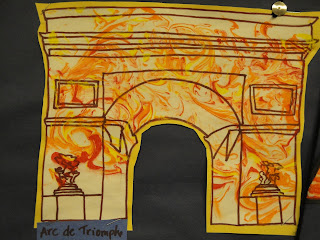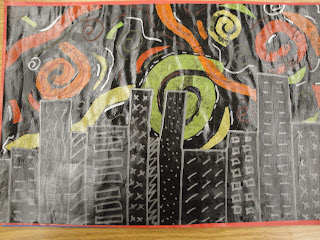Print Making Train: Print making was one our our more difficult projects. First one has to make a design on their square. Once the design is etched in nicely you take a roller with a thin amount of paint and roll it onto the square. Once it is painted on you take the square and press it onto another piece of paper. For this project we had to make a rail car and depict South Dakota in the background. I chose to make my background a field with intermittent corn.
Extension Project: This can go along well with a unit on South Dakota and use it as a way to talk about the different scenery from East to West South Dakota.
Marbling was a different project. Once we drew our landform, we took shaving cream and put it into a pan. We then took 3 colors of paint and put many small dots of paint. After the paint was on top of the shaving cream I took a tool to create movement with the paint and shaving cream. I then pressed my picture into the paint shaving cream mix. You then lift it out and scrape off the excess shaving cream and paint and let it dry.
Extension Project: This could be used in social studies on unit involving different landforms or trademark places in different places around the globe.

















